My
List |
Addition Date
|
Target
|
Mission
|
Instrument
|
Size
|

|
2012-10-15 |
|
Wide-field Infrared Survey Explorer (WISE)
|
WISE Telescope
|
3000x2400x3 |
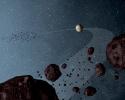
|
-
PIA16211:
-
Trojan Colors Revealed (Artist's Concept)
Full Resolution:
TIFF
(21.61 MB)
JPEG
(818.6 kB)
|

|
2012-12-06 |
|
Wide-field Infrared Survey Explorer (WISE)
|
|
3000x2000x3 |
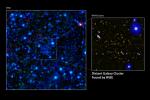
|
-
PIA16601:
-
WISE Finds a Galactic Metropolis
Full Resolution:
TIFF
(18.01 MB)
JPEG
(444.8 kB)
|

|
2013-02-05 |
Orion
|
Wide-field Infrared Survey Explorer (WISE)
|
WISE Telescope
|
5401x5400x3 |
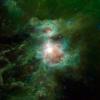
|
-
PIA16684:
-
The Cosmic Hearth
Full Resolution:
TIFF
(87.54 MB)
JPEG
(1.346 MB)
|

|
2013-03-11 |
|
Wide-field Infrared Survey Explorer (WISE)
|
WISE Telescope
|
2233x2236x3 |
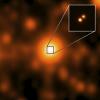
|
-
PIA16872:
-
Two Brown Dwarfs in Our Backyard
Full Resolution:
TIFF
(14.99 MB)
JPEG
(190.2 kB)
|

|
2013-05-29 |
|
Wide-field Infrared Survey Explorer (WISE)
|
WISE Telescope
|
4534x2550x3 |
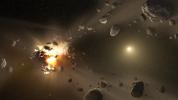
|
-
PIA17016:
-
Asteroid Family's Shattered Past (Artist Concept)
Full Resolution:
TIFF
(34.71 MB)
JPEG
(696.8 kB)
|

|
2013-10-30 |
|
Wide-field Infrared Survey Explorer (WISE)
|
WISE Telescope
|
9163x9163x3 |
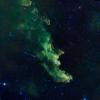
|
-
PIA17553:
-
'Witch Head' Brews Baby Stars
Full Resolution:
TIFF
(252 MB)
JPEG
(7.886 MB)
|

|
2013-11-14 |
|
Wide-field Infrared Survey Explorer (WISE)
|
WISE Telescope
|
2400x1700x3 |
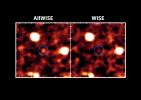
|
-
PIA17557:
-
AllWISE Brings Galaxies Out of Hiding
Full Resolution:
TIFF
(12.24 MB)
JPEG
(206.5 kB)
|

|
2013-12-03 |
|
Wide-field Infrared Survey Explorer (WISE)
|
|
1280x720x3 |
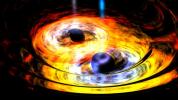
|
-
PIA17562:
-
Two Black Holes on Way to Becoming One (Artist's Concept)
Full Resolution:
TIFF
(2.766 MB)
JPEG
(108.1 kB)
|

|
2013-12-12 |
|
Wide-field Infrared Survey Explorer (WISE)
|
WISE Telescope
|
9334x7107x3 |
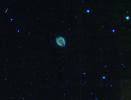
|
-
PIA17564:
-
March of Asteroids Across Dying Star
Full Resolution:
TIFF
(199.1 MB)
JPEG
(8.773 MB)
|

|
2014-01-29 |
|
Wide-field Infrared Survey Explorer (WISE)
|
WISE Telescope
|
4095x4095x3 |
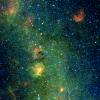
|
-
PIA17834:
-
Storm of Stars in the Trifid Nebula
Full Resolution:
TIFF
(50.32 MB)
JPEG
(2.289 MB)
|

|
2014-03-07 |
|
Wide-field Infrared Survey Explorer (WISE)
|
|
1200x1202x3 |
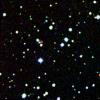
|
-
PIA17991:
-
A New Solar Neighbor
Full Resolution:
TIFF
(4.329 MB)
JPEG
(136 kB)
|

|
2014-03-07 |
|
Wide-field Infrared Survey Explorer (WISE)
|
Gemini Observatory
WISE Telescope
|
2233x2236x3 |
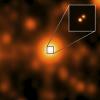
|
-
PIA17992:
-
Brown Dwarfs in our 'Backyard'
Full Resolution:
TIFF
(14.99 MB)
JPEG
(190.2 kB)
|

|
2014-04-25 |
|
Wide-field Infrared Survey Explorer (WISE)
|
|
3000x1688x3 |
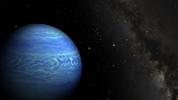
|
-
PIA18001:
-
Cold and Close Celestial Orb (Artist's Concept)
Full Resolution:
TIFF
(15.2 MB)
JPEG
(215.4 kB)
|

|
2014-05-22 |
|
Wide-field Infrared Survey Explorer (WISE)
|
WISE Telescope
|
3467x1949x3 |
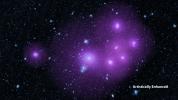
|
-
PIA18012:
-
The Clumping Behavior of Galaxies
Full Resolution:
TIFF
(20.28 MB)
JPEG
(1.191 MB)
|

|
2015-05-21 |
|
Wide-field Infrared Survey Explorer (WISE)
|
|
4000x2250x3 |
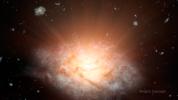
|
-
PIA19339:
-
Dusty 'Sunrise' at Core of Galaxy (Artist's Concept)
Full Resolution:
TIFF
(27.01 MB)
JPEG
(447.1 kB)
|

|
2015-06-03 |
Milky Way
|
Wide-field Infrared Survey Explorer (WISE)
|
|
1308x1308x3 |
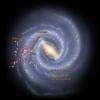
|
-
PIA19341:
-
Tracing the Arms of our Milky Way Galaxy
Full Resolution:
TIFF
(5.135 MB)
JPEG
(145.1 kB)
|

|
2016-04-19 |
|
Wide-field Infrared Survey Explorer (WISE)
|
WISE Telescope
|
3840x2160x3 |
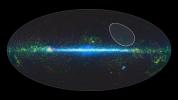
|
-
PIA20582:
-
TW Hydrae Family of Stars
Full Resolution:
TIFF
(15.21 MB)
JPEG
(882.9 kB)
|

|
2016-04-19 |
|
Wide-field Infrared Survey Explorer (WISE)
|
|
3840x2160x3 |
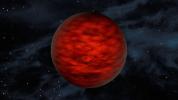
|
-
PIA20583:
-
Young Brown Dwarf in TW Hydrae Family of Stars (Artist Concept)
Full Resolution:
TIFF
(14.55 MB)
JPEG
(522.3 kB)
|

|
2016-07-19 |
|
Wide-field Infrared Survey Explorer (WISE)
|
|
8000x4500x3 |
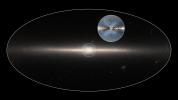
|
-
PIA20699:
-
X-Shaped Bulge in the Milky Way
Full Resolution:
TIFF
(46.74 MB)
JPEG
(6.544 MB)
|

|
2016-08-24 |
|
Wide-field Infrared Survey Explorer (WISE)
|
Fermi Gamma-ray Space Telescope
|
985x739x3 |
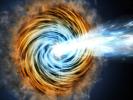
|
-
PIA20912:
-
Blazar Artist Concept
Full Resolution:
TIFF
(2.185 MB)
JPEG
(102.4 kB)
|

|
2016-09-15 |
|
Wide-field Infrared Survey Explorer (WISE)
|
|
3482x1959x3 |

|
-
PIA20027:
-
Infrared Echoes of a Black Hole Eating a Star (Illustration)
Full Resolution:
TIFF
(19.46 MB)
JPEG
(674.8 kB)
|

|
2018-11-15 |
|
Wide-field Infrared Survey Explorer (WISE)
|
ALMA
|
11520x8640x3 |
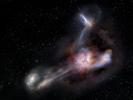
|
-
PIA22358:
-
Most Luminous Galaxy is Eating Its Neighbors (Artist's Impression)
Full Resolution:
TIFF
(127.5 MB)
JPEG
(4.134 MB)
|

|
2018-11-15 |
|
Wide-field Infrared Survey Explorer (WISE)
|
ALMA
|
3000x3000x3 |
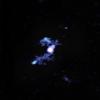
|
-
PIA22359:
-
W2246-0526 Accretion
Full Resolution:
TIFF
(3.365 MB)
JPEG
(176.9 kB)
|

|
2019-12-13 |
|
Wide-field Infrared Survey Explorer (WISE)
|
|
1622x1125x3 |
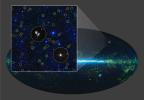
|
-
PIA23588:
-
Millions of Giant Black Holes
Full Resolution:
TIFF
(3.503 MB)
JPEG
(207.5 kB)
|

|
2022-11-11 |
Eagle Nebula
|
Wide-field Infrared Survey Explorer (WISE)
|
|
3400x3400x3 |
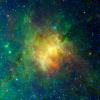
|
-
PIA25433:
-
The Eagle Nebula Observed by WISE
Full Resolution:
TIFF
(34.69 MB)
JPEG
(1.01 MB)
|

|
2005-07-13 |
Cygnus
|
W. M. Keck Observatory
|
Keck I Telescope
|
640x480x3 |
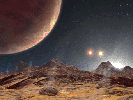
|
-
PIA03520:
-
Land of Three Suns (Artist's Concept Animation)

Full Resolution:
TIFF
(23.04 MB)
JPEG
(574 kB)
|

|
2005-07-13 |
Cygnus
|
W. M. Keck Observatory
|
Keck I Telescope
|
3000x2400x3 |
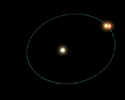
|
-
PIA03521:
-
Circus Family of Stars (Artist's Concept)

Full Resolution:
TIFF
(21.6 MB)
JPEG
(147.3 kB)
|

|
2014-12-02 |
|
W. M. Keck Observatory
|
|
3200x1800x3 |
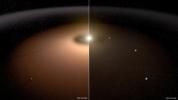
|
-
PIA18901:
-
Seeking Planets in the Dust (Artist Concept)
Full Resolution:
TIFF
(17.29 MB)
JPEG
(343.2 kB)
|

|
2017-01-30 |
HIP 79124 B
|
W. M. Keck Observatory
|
|
821x762x3 |
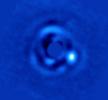
|
-
PIA21417:
-
Brown Dwarf HIP 79124 B
Full Resolution:
TIFF
(840.7 kB)
JPEG
(27.26 kB)
|

|
2017-01-30 |
HD 141569
|
W. M. Keck Observatory
|
|
559x558x3 |
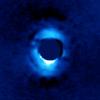
|
-
PIA21090:
-
Young Star HD 141569
Full Resolution:
TIFF
(585.1 kB)
JPEG
(19.04 kB)
|

|
1996-09-13 |
Sol (our sun)
|
Voyager
|
VG ISS - Wide Angle
|
3430x2650x3 |
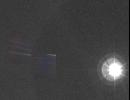
|
-
PIA00450:
-
Solar System Portrait - View of the Sun, Earth and Venus
Full Resolution:
TIFF
(8.676 MB)
JPEG
(515.8 kB)
|

|
1996-09-13 |
Sol (our sun)
|
Voyager
|
VG ISS - Wide Angle
|
4000x1200x3 |

|
-
PIA00451:
-
Solar System Portrait - 60 Frame Mosaic
Full Resolution:
TIFF
(1.124 MB)
JPEG
(166.4 kB)
|

|
1999-08-08 |
1989N2
|
Voyager
|
VG ISS - Narrow Angle
|
635x315x1 |
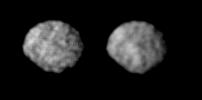
|
-
PIA02206:
-
Satellite 1989N2
Full Resolution:
TIFF
(45.68 kB)
JPEG
(7.233 kB)
|

|
2012-12-03 |
Sol (our sun)
|
Voyager
|
Magnetometer
|
2006x1479x3 |
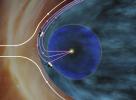
|
-
PIA16482:
-
The Sun's Southern Wind Flows Northward (Artist's Concept)
Full Resolution:
TIFF
(8.904 MB)
JPEG
(151.9 kB)
|

|
2012-12-03 |
Sol (our sun)
|
Voyager
|
|
1772x975x3 |
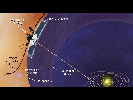
|
-
PIA16483:
-
Plasma Flow Near Voyager 1 (Artist Animation)

Full Resolution:
TIFF
(1.731 MB)
JPEG
(117.8 kB)
|

|
2012-12-03 |
Sol (our sun)
|
Voyager
|
|
1000x973x3 |
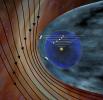
|
-
PIA16485:
-
Solar and Interstellar Magnetic Fields (Artist's Concept)
Full Resolution:
TIFF
(2.92 MB)
JPEG
(98.65 kB)
|

|
2012-12-03 |
Sol (our sun)
|
Voyager
|
|
1280x720x3 |
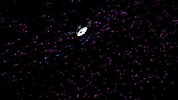
|
-
PIA16486:
-
Voyager 1 Explores the "Magnetic Highway"

Full Resolution:
TIFF
(2.766 MB)
JPEG
(61.38 kB)
|

|
2013-06-27 |
Sol (our sun)
|
Voyager
|
|
1385x1103x3 |
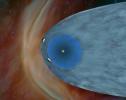
|
-
PIA17033:
-
Voyagers in the Heliosheath (Cropped)
Full Resolution:
TIFF
(4.585 MB)
JPEG
(80.83 kB)
|

|
2013-06-27 |
Sol (our sun)
|
Voyager
|
|
1280x730x3 |
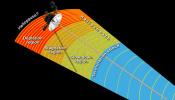
|
-
PIA17034:
-
Transitional Regions at the Heliosphere's Outer Limits
Full Resolution:
TIFF
(2.804 MB)
JPEG
(110 kB)
|

|
2013-09-12 |
Sol (our sun)
|
Voyager
|
Plasma Wave Instrument
|
1280x720x3 |
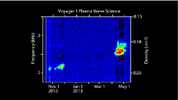
|
-
PIA17045:
-
Voyager Captures Sounds of Interstellar Space

Full Resolution:
TIFF
(2.766 MB)
JPEG
(56.6 kB)
|

|
2013-09-12 |
Sol (our sun)
|
Voyager
|
|
5432x3025x3 |
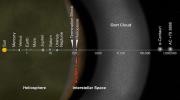
|
-
PIA17046:
-
Voyager Goes Interstellar (Artist Concept)
Full Resolution:
TIFF
(49.32 MB)
JPEG
(3.534 MB)
|

|
2013-09-12 |
Sol (our sun)
|
Voyager
|
Very Long Baseline Array
|
512x512x3 |
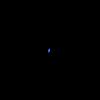
|
-
PIA17047:
-
Voyager Signal Spotted By Earth Radio Telescopes
Full Resolution:
TIFF
(264.2 kB)
JPEG
(4.896 kB)
|

|
2013-09-12 |
Sol (our sun)
|
Voyager
|
|
1280x720x3 |
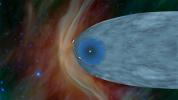
|
-
PIA17048:
-
One Voyager Out, One Voyager In (Artist Concept)
Full Resolution:
TIFF
(2.766 MB)
JPEG
(65.1 kB)
|

|
2013-09-12 |
Sol (our sun)
|
Voyager
|
|
1280x720x3 |
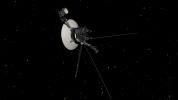
|
-
PIA17049:
-
Voyager in Space (Artist Concept)
Full Resolution:
TIFF
(2.766 MB)
JPEG
(35.7 kB)
|

|
2013-09-12 |
Sol (our sun)
|
Voyager
|
|
1280x720x3 |
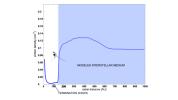
|
-
PIA17441:
-
Observed Change in Density Shows Voyager is in Interstellar Space
Full Resolution:
TIFF
(2.766 MB)
JPEG
(44.37 kB)
|

|
2013-09-12 |
Sol (our sun)
|
Voyager
|
|
1280x720x3 |
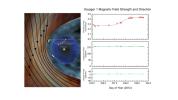
|
-
PIA17442:
-
Mystery of the Interstellar Magnetic Field (Artist's Concept)
Full Resolution:
TIFF
(2.766 MB)
JPEG
(78.79 kB)
|

|
2013-09-12 |
Sol (our sun)
|
Voyager
|
|
1280x720x3 |
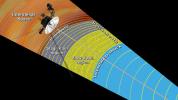
|
-
PIA17460:
-
Moving into Interstellar Space (Artist Concept)
Full Resolution:
TIFF
(2.766 MB)
JPEG
(120.1 kB)
|

|
2013-09-12 |
Sol (our sun)
|
Voyager
|
Oschin Schmidt Telescope
|
891x893x1 |
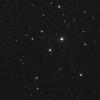
|
-
PIA17461:
-
Heading toward Gliese 445
Full Resolution:
TIFF
(796.7 kB)
JPEG
(105.7 kB)
|

|
2013-09-12 |
Sol (our sun)
|
Voyager
|
|
8192x4610x3 |
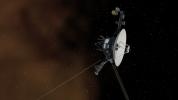
|
-
PIA17462:
-
Voyager 1 Entering Interstellar Space (Artist Concept)
Full Resolution:
TIFF
(113.3 MB)
JPEG
(938.1 kB)
|

|
2013-09-12 |
Sol (our sun)
|
Voyager
|
|
1280x720x3 |
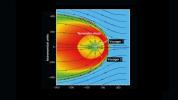
|
-
PIA17463:
-
Heliosphere Traveling Through Interstellar Space
Full Resolution:
TIFF
(2.766 MB)
JPEG
(72.59 kB)
|

|
2021-05-11 |
|
Voyager
|
|
1241x427x3 |
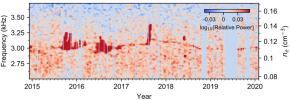
|
-
PIA24572:
-
Weak and Strong Plasma Oscillation Signals
Full Resolution:
TIFF
(960.8 kB)
JPEG
(80.75 kB)
|

|
1999-12-01 |
|
Two Micron All Sky Survey (2MASS)
|
Two Micron All Sky Survey (2MASS)
|
2425x1498x3 |
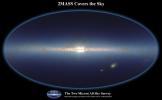
|
-
PIA04203:
-
Entire Sky
Full Resolution:
TIFF
(6.645 MB)
JPEG
(365.5 kB)
|

|
1999-12-09 |
Antennae or Ring Tail galaxies
|
Two Micron All Sky Survey (2MASS)
|
Two Micron All Sky Survey (2MASS)
|
456x586x3 |

|
-
PIA04205:
-
Antennae
Full Resolution:
TIFF
(674.6 kB)
JPEG
(54.88 kB)
|

|
1999-12-02 |
Coma cluster
|
Two Micron All Sky Survey (2MASS)
|
Two Micron All Sky Survey (2MASS)
|
2106x2249x3 |

|
-
PIA04210:
-
Coma cluster of galaxies
Full Resolution:
TIFF
(11.22 MB)
JPEG
(783.8 kB)
|

|
1999-12-02 |
Trifid Nebula
|
Two Micron All Sky Survey (2MASS)
|
Two Micron All Sky Survey (2MASS)
|
930x1408x3 |

|
-
PIA04220:
-
Trifid Nebula
Full Resolution:
TIFF
(3.452 MB)
JPEG
(314.9 kB)
|

|
2003-03-27 |
|
Two Micron All Sky Survey (2MASS)
|
Two Micron All Sky Survey (2MASS)
|
6782x3540x3 |
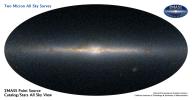
|
-
PIA04250:
-
Point Source All Sky
Full Resolution:
TIFF
(30.1 MB)
JPEG
(3.661 MB)
|

|
2003-03-27 |
|
Two Micron All Sky Survey (2MASS)
|
Two Micron All Sky Survey (2MASS)
|
4500x2400x3 |
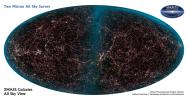
|
-
PIA04251:
-
Extended Source/Galaxy All Sky 2
Full Resolution:
TIFF
(20.06 MB)
JPEG
(1.845 MB)
|

|
2003-03-27 |
|
Two Micron All Sky Survey (2MASS)
|
Two Micron All Sky Survey (2MASS)
|
4500x2400x3 |
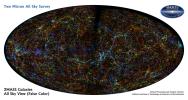
|
-
PIA04252:
-
Extended Source/Galaxy All Sky 1
Full Resolution:
TIFF
(19 MB)
JPEG
(2.299 MB)
|

|
2017-01-06 |
|
SWIFT
|
|
3840x2160x3 |
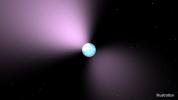
|
-
PIA21085:
-
Pulsar Artist's Concept
Full Resolution:
TIFF
(7.64 MB)
JPEG
(177.3 kB)
|

|
2011-01-12 |
|
Subaru Telescope
|
|
1100x1100x3 |
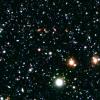
|
-
PIA13782:
-
Galactic City at the Edge of the Universe
Full Resolution:
TIFF
(3.635 MB)
JPEG
(177.3 kB)
|

|
2012-03-29 |
|
SOFIA
|
FORCAST
|
1512x2019x3 |

|
-
PIA15420:
-
NASA's SOFIA Captures Images of the Planetary Nebula M2-9
Full Resolution:
TIFF
(9.175 MB)
JPEG
(78.26 kB)
|

|
2020-01-07 |
|
SOFIA
|
|
2608x3022x3 |

|
-
PIA23409:
-
SOFIA Reveals How the Swan Nebula Hatched
Full Resolution:
TIFF
(15.44 MB)
JPEG
(401.7 kB)
|

|
2006-01-17 |
|
Stardust
|
DC-8 Airborne Laboratory
|
2360x1808x3 |

|
-
PIA03668:
-
Stardust Capsule Return
Full Resolution:
TIFF
(12.82 MB)
JPEG
(371 kB)
|

|
2010-06-24 |
|
Spitzer Space Telescope
Wide-field Infrared Survey Explorer (WISE)
|
|
3000x2400x3 |
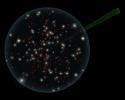
|
-
PIA13217:
-
Coolest Orbs on the Block (Artist's Concept)
Full Resolution:
TIFF
(21.6 MB)
JPEG
(208.9 kB)
|

|
2011-10-24 |
|
Spitzer Space Telescope
Wide-field Infrared Survey Explorer (WISE)
|
IRAC
WISE Telescope
|
2811x2154x3 |
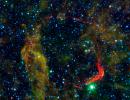
|
-
PIA14871:
-
All That Remains of Exploded Star
Full Resolution:
TIFF
(18.16 MB)
JPEG
(660.9 kB)
|

|
2013-06-05 |
|
Spitzer Space Telescope
Wide-field Infrared Survey Explorer (WISE)
|
IRAC
WISE Telescope
|
3000x3000x3 |
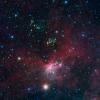
|
-
PIA17018:
-
Stars Shoot Jets in Cosmic Playground
Full Resolution:
TIFF
(27.01 MB)
JPEG
(1.76 MB)
|

|
2013-06-05 |
|
Spitzer Space Telescope
Wide-field Infrared Survey Explorer (WISE)
|
IRAC
WISE Telescope
|
9000x7000x3 |
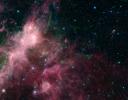
|
-
PIA17019:
-
Life and Death Intermingled
Full Resolution:
TIFF
(189.1 MB)
JPEG
(10.27 MB)
|

|
2013-08-01 |
|
Spitzer Space Telescope
Wide-field Infrared Survey Explorer (WISE)
|
IRAC
|
2400x1200x3 |
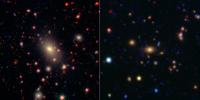
|
-
PIA17253:
-
Monster in the Middle: Brightest Cluster Galaxy
Full Resolution:
TIFF
(8.643 MB)
JPEG
(226 kB)
|

|
2013-11-14 |
|
Spitzer Space Telescope
Wide-field Infrared Survey Explorer (WISE)
|
Very Large Array (VLA)
|
2030x1200x3 |
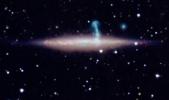
|
-
PIA17556:
-
Two Galaxies Masquerading as One
Full Resolution:
TIFF
(7.311 MB)
JPEG
(99.06 kB)
|

|
2014-04-25 |
|
Spitzer Space Telescope
Wide-field Infrared Survey Explorer (WISE)
|
|
810x798x3 |
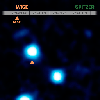
|
-
PIA18002:
-
Cold and Quick: a Fast-Moving Brown Dwarf

Full Resolution:
TIFF
(1.94 MB)
JPEG
(28.72 kB)
|

|
2014-04-25 |
|
Spitzer Space Telescope
Wide-field Infrared Survey Explorer (WISE)
|
|
1200x900x3 |
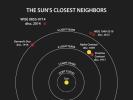
|
-
PIA18003:
-
Welcome to the Sun's Neighborhood
Full Resolution:
TIFF
(3.241 MB)
JPEG
(67.8 kB)
|

|
2016-01-05 |
|
Spitzer Space Telescope
Wide-field Infrared Survey Explorer (WISE)
|
Spitzer Space Telescope
WISE Telescope
|
2106x706x3 |
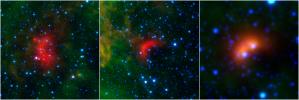
|
-
PIA20062:
-
Bow Shocks in Space
Full Resolution:
TIFF
(4.022 MB)
JPEG
(177.7 kB)
|

|
2017-11-01 |
|
Spitzer Space Telescope
Wide-field Infrared Survey Explorer (WISE)
|
|
2048x1152x3 |
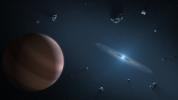
|
-
PIA22084:
-
Polluted White Dwarf (Artist's Concept)
Full Resolution:
TIFF
(3.508 MB)
JPEG
(78.36 kB)
|

|
2006-04-05 |
|
Spitzer Space Telescope
W. M. Keck Observatory
|
IRAC
Keck I Telescope
|
2571x2130x3 |
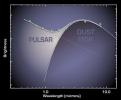
|
-
PIA08041:
-
Circle of Ashes
Full Resolution:
TIFF
(16.45 MB)
JPEG
(212.9 kB)
|

|
2016-11-10 |
OGLE-2015-BLG-1319
|
Spitzer Space Telescope
SWIFT
|
|
4800x2700x3 |
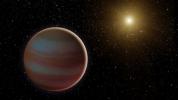
|
-
PIA21076:
-
Brown Dwarf Microlensing (Illustration)
Full Resolution:
TIFF
(18.01 MB)
JPEG
(460.3 kB)
|

|
2014-09-09 |
|
Spitzer Space Telescope
Subaru Telescope
|
|
4096x4096x3 |
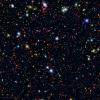
|
-
PIA18472:
-
Take a Splash Into the Cosmos
Full Resolution:
TIFF
(50.35 MB)
JPEG
(2.502 MB)
|

|
2013-11-21 |
|
Spitzer Space Telescope
Hubble Space Telescope
Subaru Telescope
|
IRAC
|
960x960x3 |
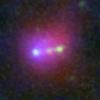
|
-
PIA17558:
-
Three-headed Galactic Blob
Full Resolution:
TIFF
(2.766 MB)
JPEG
(33.67 kB)
|

|
2004-03-08 |
|
Spitzer Space Telescope
|
IRAC
Multiband Imaging Photometer (MIPS)
|
2262x1899x3 |
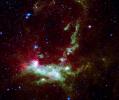
|
-
PIA05517:
-
Star Formation in Henize 206
Full Resolution:
TIFF
(8.739 MB)
JPEG
(428.1 kB)
|

|
2003-09-03 |
|
Spitzer Space Telescope
|
IRAC
|
1600x2000x3 |

|
-
PIA04724:
-
SIRTF "Aliveness Test" Image
Full Resolution:
TIFF
(2.686 MB)
JPEG
(162.7 kB)
|

|
2003-12-18 |
|
Spitzer Space Telescope
|
IRAC
|
1142x939x3 |
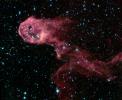
|
-
PIA04934:
-
Dark Globule in IC 1396 (IRAC)
Full Resolution:
TIFF
(2.755 MB)
JPEG
(172.5 kB)
|

|
2003-12-18 |
|
Spitzer Space Telescope
|
MIPS
IRAC
|
2332x1616x3 |
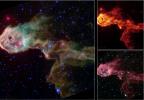
|
-
PIA04935:
-
Multi-Wavelength Views of Protostars in IC 1396
Full Resolution:
TIFF
(9.179 MB)
JPEG
(359.4 kB)
|

|
2003-12-18 |
|
Spitzer Space Telescope
|
IRAC
|
1364x1038x3 |
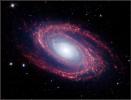
|
-
PIA04936:
-
Short-Wavelength Infrared Views of Messier 81
Full Resolution:
TIFF
(3.273 MB)
JPEG
(139.3 kB)
|

|
2003-12-18 |
|
Spitzer Space Telescope
|
MIPS
IRAC
|
2286x2334x3 |

|
-
PIA04937:
-
Multi-Wavelength Views of Messier 81
Full Resolution:
TIFF
(12.2 MB)
JPEG
(516.4 kB)
|

|
2003-12-18 |
|
Spitzer Space Telescope
|
MIPS
|
1108x2148x3 |

|
-
PIA04938:
-
Long-Wavelength Infrared Views of Messier 81
Full Resolution:
TIFF
(3.404 MB)
JPEG
(164.3 kB)
|

|
2003-12-18 |
|
Spitzer Space Telescope
|
IRAC
|
1020x643x3 |
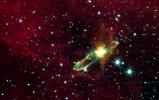
|
-
PIA04939:
-
Embedded Outflows from Herbig-Haro 46/47
Full Resolution:
TIFF
(1.772 MB)
JPEG
(79.87 kB)
|

|
2003-12-18 |
|
Spitzer Space Telescope
|
Infrared Spectrograph (IRS)
|
2872x2056x3 |
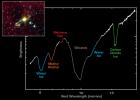
|
-
PIA04940:
-
Spectrum from Embedded Star in Herbig-Haro 46/47
Full Resolution:
TIFF
(2.417 MB)
JPEG
(271.3 kB)
|

|
2003-12-18 |
|
Spitzer Space Telescope
|
Infrared Spectrograph (IRS)
|
2912x2040x3 |
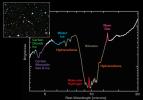
|
-
PIA04941:
-
Spectrum from Faint Galaxy IRAS F00183-7111
Full Resolution:
TIFF
(2.3 MB)
JPEG
(316.7 kB)
|

|
2003-12-18 |
|
Spitzer Space Telescope
|
MIPS
|
1424x944x3 |
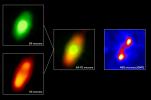
|
-
PIA04942:
-
Circumstellar Disk Around Fomalhaut
Full Resolution:
TIFF
(789.1 kB)
JPEG
(58.51 kB)
|

|
2003-12-18 |
|
Spitzer Space Telescope
|
MIPS
|
658x430x3 |
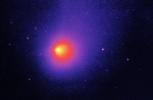
|
-
PIA04943:
-
Comet Schwassmann-Wachmann I
Full Resolution:
TIFF
(611.8 kB)
JPEG
(26.98 kB)
|

|
2004-01-13 |
Tarantula Nebula
|
Spitzer Space Telescope
|
IRAC
|
1384x908x3 |
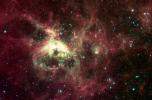
|
-
PIA05062:
-
The Tarantula Nebula
Full Resolution:
TIFF
(3.778 MB)
JPEG
(167.3 kB)
|

|
2004-02-12 |
Cepheus
|
Spitzer Space Telescope
|
IRAC
|
1103x1293x3 |

|
-
PIA05266:
-
Spitzer Telescope Sends Rose for Valentine's Day
Full Resolution:
TIFF
(2.124 MB)
JPEG
(88.71 kB)
|

|
2004-04-13 |
|
Spitzer Space Telescope
|
IRAC
|
3652x1936x3 |
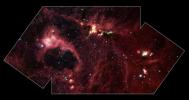
|
-
PIA05732:
-
Nursery of Giants
Full Resolution:
TIFF
(13.19 MB)
JPEG
(548.3 kB)
|

|
2004-04-13 |
|
Spitzer Space Telescope
|
MIPS
|
2499x779x3 |

|
-
PIA05733:
-
Stormy Clouds of Star Birth
Full Resolution:
TIFF
(3.511 MB)
JPEG
(102.2 kB)
|

|
2004-04-13 |
|
Spitzer Space Telescope
|
IRAC
|
3652x1936x3 |
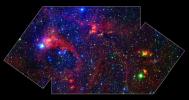
|
-
PIA05734:
-
Spitzer Makes "Invisible" Visible
Full Resolution:
TIFF
(12.89 MB)
JPEG
(935.6 kB)
|

|
2004-04-13 |
|
Spitzer Space Telescope
|
IRAC
Multiband Imaging Photometer (MIPS)
|
3600x2556x3 |
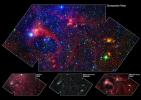
|
-
PIA05735:
-
Star Formation in the DR21 Region (A)
Full Resolution:
TIFF
(17.13 MB)
JPEG
(1.391 MB)
|

|
2004-04-13 |
|
Spitzer Space Telescope
|
IRAC
Multiband Imaging Photometer (MIPS)
|
3588x4224x3 |

|
-
PIA05736:
-
Star Formation in the DR21 Region (B)
Full Resolution:
TIFF
(19.11 MB)
JPEG
(840.7 kB)
|

|
2004-05-11 |
|
Spitzer Space Telescope
|
IRAC
|
1530x776x3 |

|
-
PIA05878:
-
A Natal Microcosm
Full Resolution:
TIFF
(3.336 MB)
JPEG
(98.57 kB)
|

|
2004-05-11 |
|
Spitzer Space Telescope
|
IRAC
|
708x570x3 |
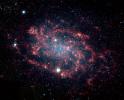
|
-
PIA05879:
-
Dissection of a Galaxy
Full Resolution:
TIFF
(1.009 MB)
JPEG
(75.25 kB)
|

|
2004-05-27 |
RCW 49 Nebula
|
Spitzer Space Telescope
|
IRAC
|
1520x1520x3 |
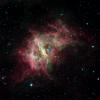
|
-
PIA05989:
-
Stellar Jewels Shine in New Spitzer Image
Full Resolution:
TIFF
(5.235 MB)
JPEG
(195.4 kB)
|

|
2004-05-27 |
|
Spitzer Space Telescope
|
|
1600x1200x3 |
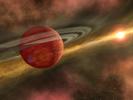
|
-
PIA05988:
-
Out of the Dust, A Planet is Born (Artist Concept)
Full Resolution:
TIFF
(4.995 MB)
JPEG
(111.9 kB)
|

 Planetary Data System
Planetary Data System





















































































































